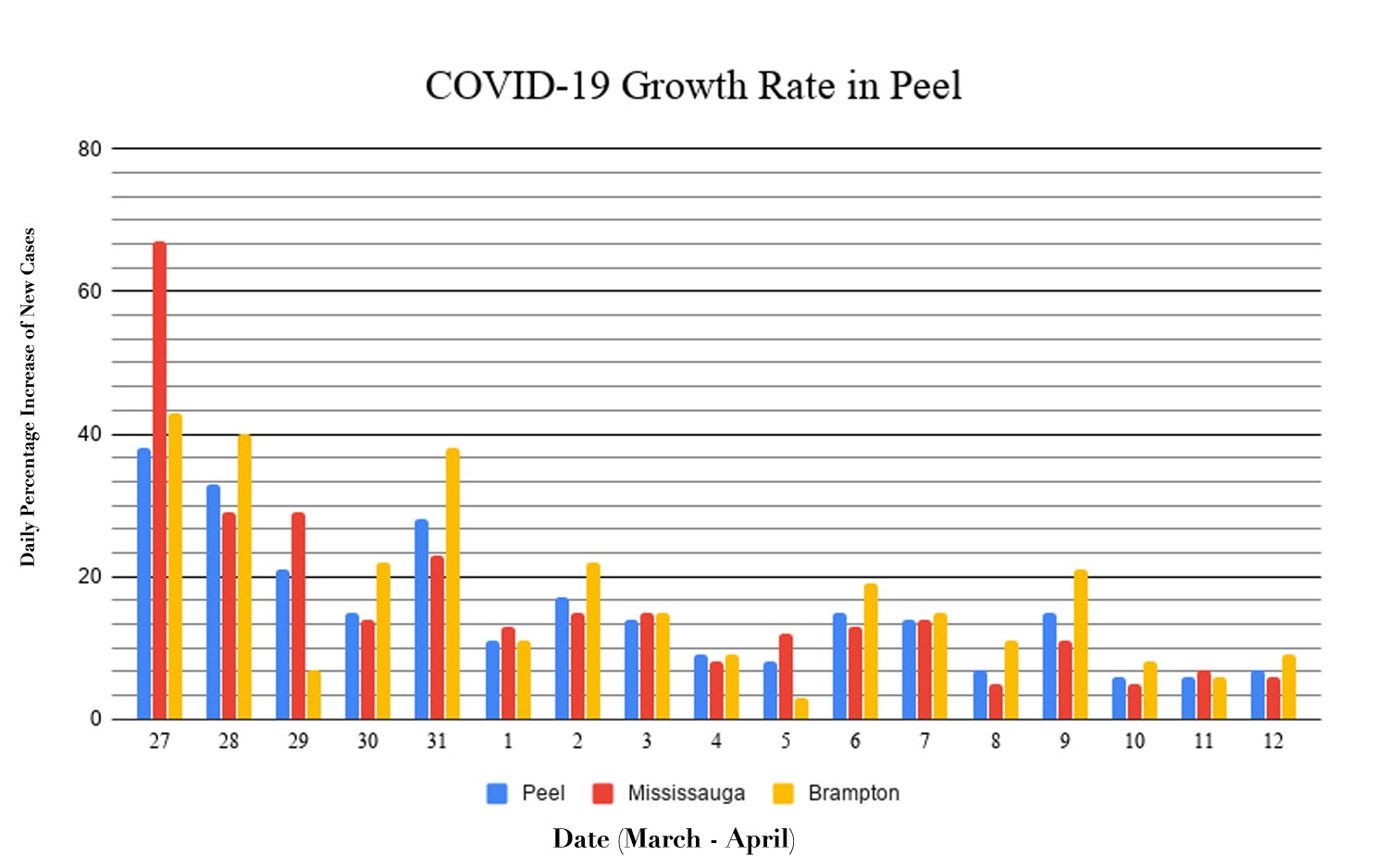
Growth rate for COVID-19 cut in half in Peel, first sign that physical distancing measures are working
The Region of Peel reached nearly 1,000 confirmed cases of COVID-19 on Sunday with 65 new infections reported in the region, bringing the total to 951.
The new cases pushed Mississauga over the 500-case mark with 29 new infections and Brampton passed 400 confirmed infections with 35 new cases reported Sunday morning.
Looking at the total number of cases across Peel can be startling, and news of additional cases being reported each day can be unnerving, but should not be unexpected. A closer look at the trends over the last several weeks shows that the strict social and physical distancing measures put in place are having the desired effect of slowing the rate of spread of the novel coronavirus.
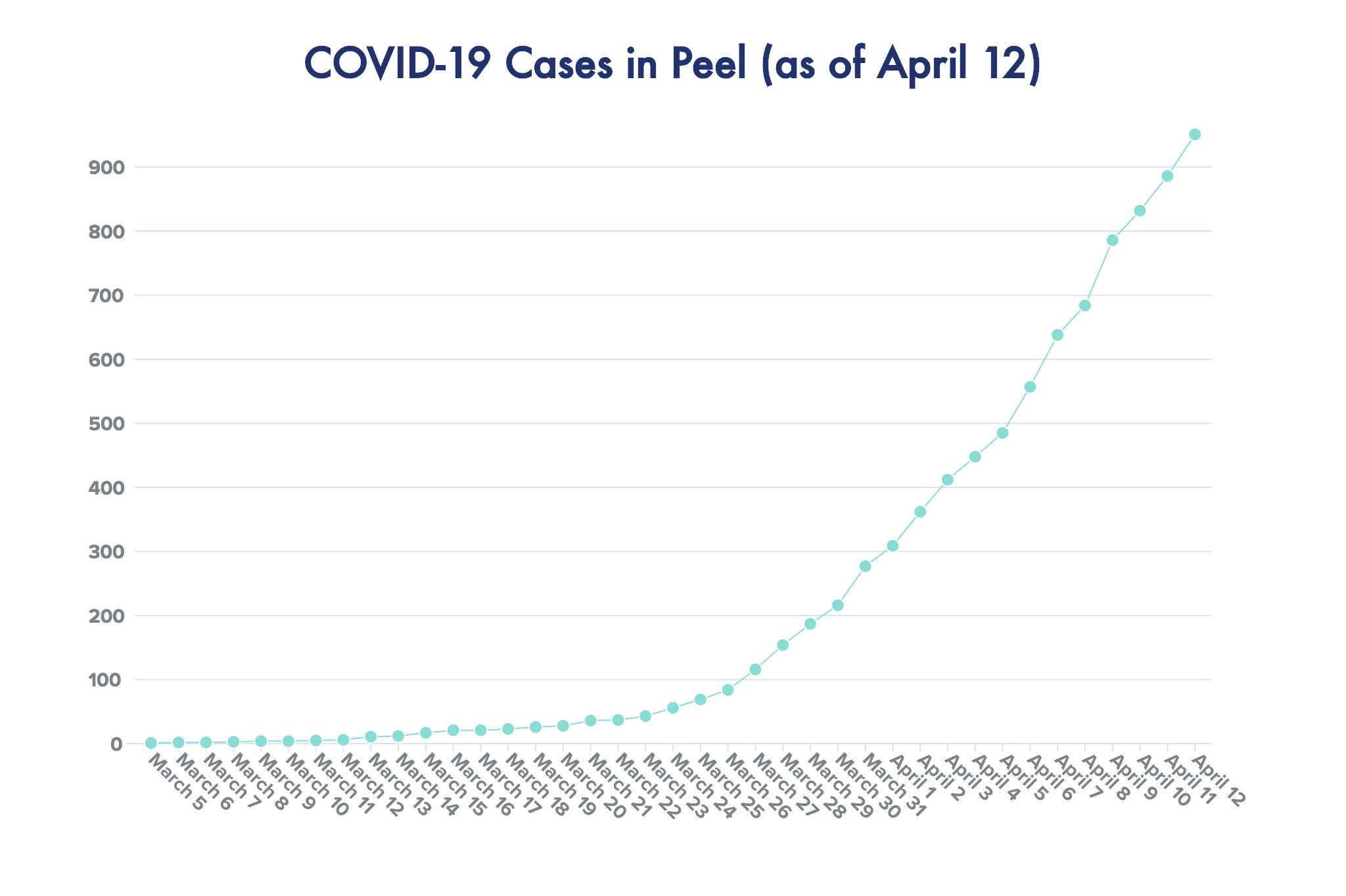
Charts showing the rate of increase in new infections illustrates the trend, which has seen the average daily growth rate of new infections cut in half in recent weeks.
Between March 27 and April 3, Peel’s new cases of COVID-19 were increasing by an average of 22 percent everyday. However, between April 4 and 12, cases have only increased 10 percent per day, on average, in the region.
Similar trends are seen in both Brampton and Mississauga.
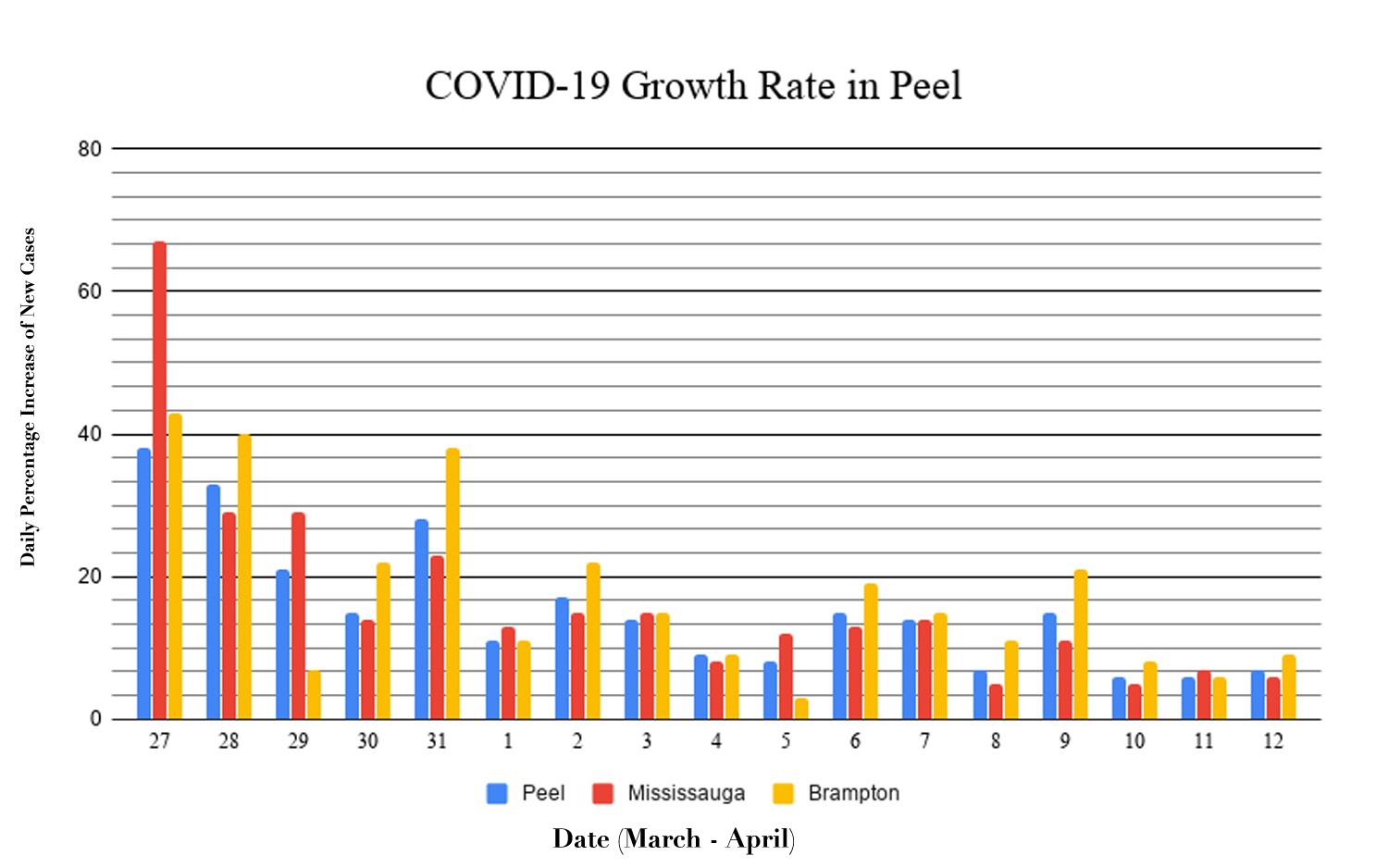
Brampton has seen its rate of increase drop from 25 percent per day, on average, between March 27 and April 3, to 11 percent per day between April 4 and 12. Mississauga has cut the daily increase from 26 percent a day, on average, to 9 percent daily over the same time frame.
The numbers suggest that Ontario is moving closer toward a “best case” scenario in terms of the province’s projections for the spread of the virus, released earlier this month. Provincial modelling predicts as many as 1,600 people could die by April 30 as a result of COVID-19, with up to 80,000 cases by the same date, but that was before enhanced social distancing measures were put in place a little more than a week ago, adding approximately 30 business categories to the list of those that have to shutdown, expanding the curtailment of construction activity, stiffening police and bylaw enforcement of required social distancing, stepped up protocols to protect essential workers, along with other actions.
Similar modelling released by the federal government projects much of the same, that if isolation is strict, the outcome will be closer to the best case scenarios.
Peel’s numbers, which follow a similar trend observed in the province, suggest we are moving away from the nightmarish “worst case” projections that have foreseen thousands more infections and deaths around the world, especially in those places where social distancing has not been properly implemented or followed.
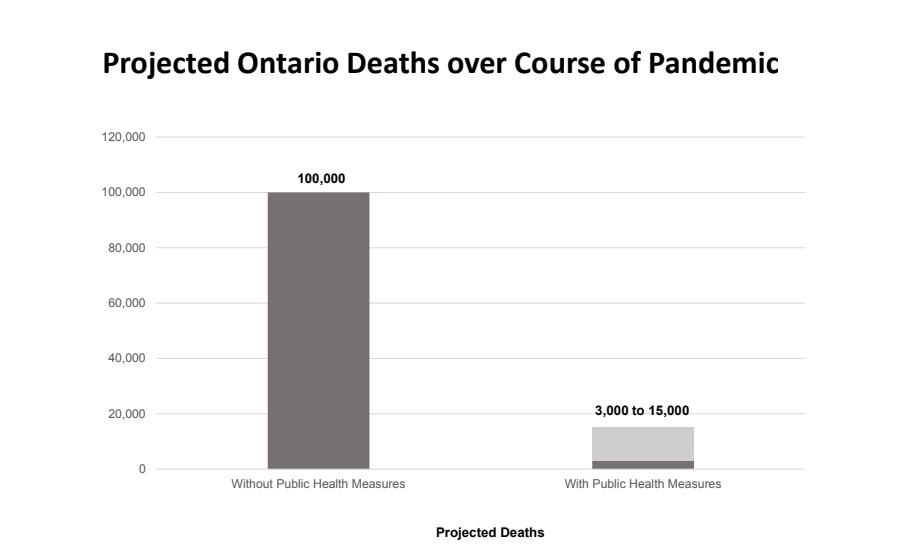
As of Saturday at 4 p.m., Ontario saw an additional 401 cases confirmed across the province (an increase of 6 percent from the day before). To date, the province has lost 274 lives to COVID-19 and currently 3,121 cases are marked as resolved.
While the apparent slowed spread of COVID-19 is an encouraging sign for residents and public health officials, they are not enough to signal the loosening of any physical distancing measures. All levels of government have made it clear the fight against COVID-19 will take months, and require a lengthy period of physical and social distancing.
Prime Minister Justin Trudeau used the Easter holiday weekend to remind Canadians that we are all in this together.
“Usually, we mark this day by coming together at church, sharing meals with loved ones, or helping our children hunt for Easter eggs. This year, as we celebrate differently in response to the COVID-19 pandemic, Easter’s themes of hope, understanding, and renewal are more relevant than ever,” he stated. “We are seeing great displays of personal sacrifice and compassion during this pandemic. Canadians are protecting their friends and families by staying home. Others are donating to food banks, picking up groceries for friends and loved ones, and going to their jobs so we can continue to get the essential goods and services we need. By doing this, Canadians are showing the true meaning of loving our neighbours as ourselves.”
More stories are starting to emerge as members from communities across Ontario band together to help in any way they can. Whether that’s from the individuals making cotton masks at their kitchen tables, or the many alcohol distilleries who have transitioned into making hand sanitizer, it’s clear Ontarians are stepping up to help.
On March 21, the provincial government launched its Ontario Together web portal to attract any businesses willing to help in the fight against COVID-19. Since its launch, the portal has received over 14,000 submissions from companies looking to repurpose their efforts to make all kinds of needed supplies including masks, gowns, face shields and ventilators.
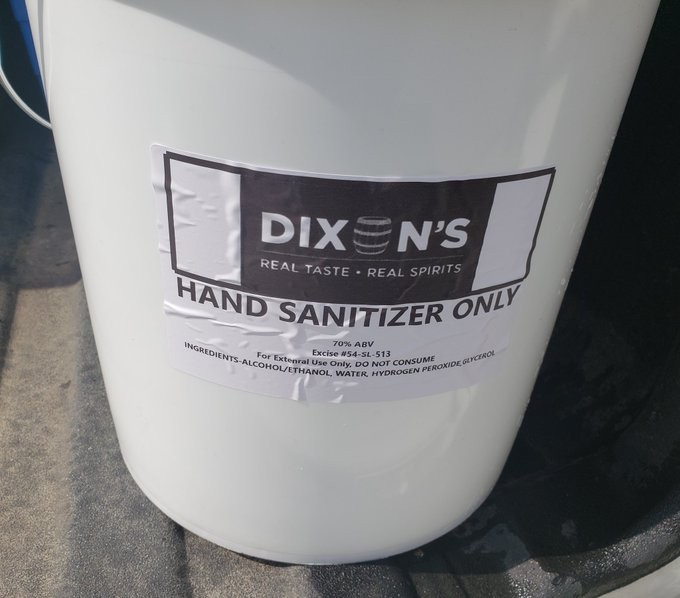
A bucket of hand sanitizer delivered to Brampton Fire Services from Dixon's Spirits.
In a statement Saturday, Premier Doug Ford urged businesses to keep the proposals flowing.
"Since our initial call to action was issued, we have had a tremendous response from Ontario businesses," said Premier Ford. "These go-getters have stepped up in a big way to support our frontline workers with medical supplies and equipment, and many more are coming forward with a variety of innovative solutions. We have mobilized our manufacturing firepower and are converting it into Canada's manufacturing workshop. But we need to enlist even more of our entrepreneurial leaders in order to stop this virus in its tracks."
Ford has been widely praised for his approach, not relying on foreign entities for desperately needed supplies, instead putting out a call to arms for Ontarians and businesses here to provide what the province needs.
In a resource rich country like Canada, which also has an incredibly diversified manufacturing and supply chain infrastructure, many observers with knowledge of the economic landscape have said a temporary re-tooling of industry here, is probably a good approach, instead of relying on increasingly cutthroat international supply chains that critics say are taking advantage of the public health crisis.
According to numbers from the province, over 7,500 emergency supply submissions have generated nearly $90 million in purchases of critical equipment and supplies, including, 5.1 million gloves, 20 million masks, 250,000 face shields, and 50,000 units of clip-on hand sanitizer for OPP officers.
In Brampton, local company O-Two Medical Technologies Inc. is producing 10,000 ventilators for the country.
The province has also received approximately 1,200 submissions related to supporting the delivering of mental health programs and assistance to vulnerable populations, and ideas related to protecting and strengthening the province’s supply chains.
Ontario is now looking for ideas on how to support remote learning and education systems during the pandemic that has forced the closure of public schools across the province.
Email: [email protected]
Twitter: @JoeljWittnebel
COVID-19 is impacting all Canadians. At a time when vital public information is needed by everyone, The Pointer has taken down our paywall on all stories relating to the pandemic to ensure every resident of Brampton and Mississauga has access to the facts. For those who are able, we encourage you to consider a subscription. This will help us report on important public interest issues the community needs to know about now more than ever. You can register for a 30-day free trial HERE. Thereafter, The Pointer will charge $10 a month and you can cancel any time right on the website. Thank you.
Submit a correction about this story


